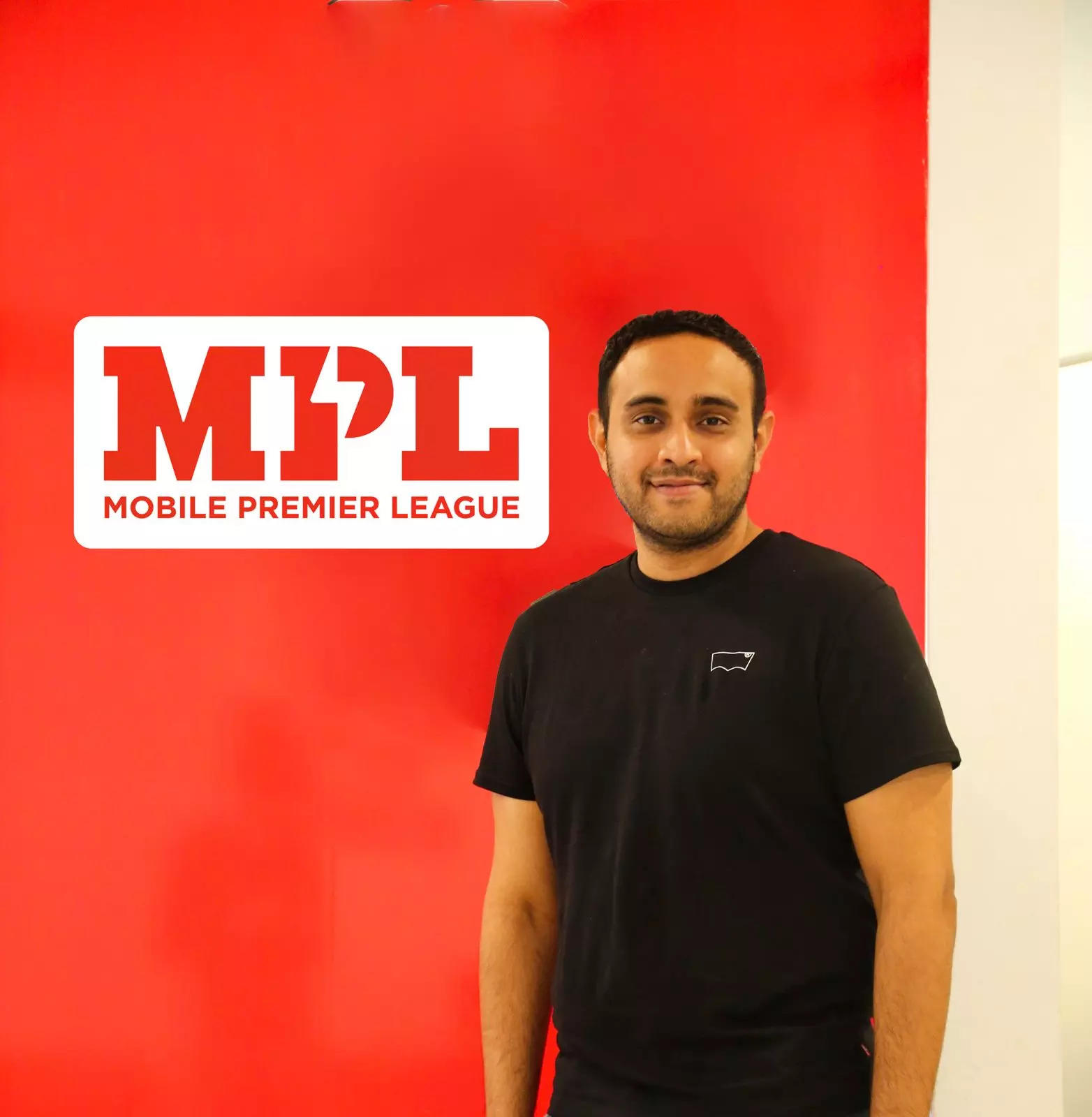Tech
MPL CEO Sai Srinivas: Our primary focus is to prioritise needs and preferences of players

Sai Srinivas is the co-founder and CEO of Mobile Premier League (MPL), claimed to be Asia’s largest esports and skill gaming platform. He co-founded MPL in 2018 with Shubham Malhotra, with whom he had earlier co-founded TeeWe, a hardware streaming company. Srinivas is an alumnus of IIT Kanpur. His tryst with gaming began at Zynga in Bengaluru, where he worked as an Associate Game Designer and Associate Product Manager. He is also co-founder of CREO Tech and was also its cEO for some time. Srinivas spoke to Times of India on the company’s plans, new gaming rules and more. Excerpts:
Let’s start with an overview of your business’s performance over the past year, how has it been?
In the past year, MPL has experienced remarkable growth, with our net revenue soaring by an impressive 80% versus fiscal year 2022. Notably, we achieved profitability in December 2022, and we have seen this continue in the subsequent months too.
This trajectory can be attributed to a few key factors, an unwavering focus on growth, a player-first mindset in everything we do and disciplined cost management. We prioritized reducing infrastructure costs while accommodating a growing user base, resulting in reduced cost per active user. We introduced several industry-leading features that keep our players’ security at the forefront. Additionally, we developed in-house infrastructure for data analytics, minimizing reliance on expensive SaaS solutions and enabling full integration of data capabilities. By continuing to execute these strategies, we are confident in our ability to strengthen our market share and solidify our position.
Can you give some insights into the company’s strategy for expanding its market share in the highly competitive gaming space?
Our long-term goal is to establish ourselves as a prominent global gaming hub, and we have already made significant strides in this direction. We recently expanded our reach to Africa with our foray into Nigeria. Moreover, we have achieved a strong presence in Asia, North America, and Europe, boasting an impressive user base of over 200 million. To cater to diverse gaming markets and appeal to a wide range of players worldwide, MPL offers various options such as Paid Competitive Gaming, Free-to-Play, and we have recently ventured into AAA game development and Web3 gaming.
In order to stand out in the global gaming landscape, we place great importance on adopting a player-centric approach. Our primary focus is to prioritize the needs and preferences of players, ensuring an exceptional gaming experience. By thoroughly understanding the desires of gamers from different regions and cultures, we customize our offerings to cater to their specific interests and demands.
What are the plans or initiatives MPL has to further strengthen its presence in the Indian gaming sector?
We want to establish ourselves as a gaming powerhouse, catering to all aspects of gaming. We have a strong Paid Competitive Gaming (PCG) portfolio and we envision that we can be the largest player in the PCG space not only in India but the world. Apart from this, we have other ambitious plans to establish a presence in other aspects of gaming. Last year, we launched our first AAA gaming studio, Mayhem, to produce world-class titles and announced our flagship game, Underworld Gang Wars. While I am unable to disclose specific details about the game at this time, our team has been working diligently on the development, and it is currently in the alpha stage.
We have also recently forayed into Web3 gaming through our digital asset marketplace, GGX, and we see immense potential in this burgeoning space. Our team is working on opportunities that Web3 technology offers. We have seen promising results so far with the first game we launched on our platform, Striker. I think people will be pleasantly surprised by the achievements of Indian builders in comparison to their more widely-recognised Western counterparts.
MPL is present across four continents, what are the challenges that you see in this expansion and how has the journey been so far? Any plans to expand to other geographies?
Our goal has always been to create a global platform, and expanding to different regions has been a strategic move in that direction. Currently, India contributes to about 70% of our revenues, while the remaining 30% comes from outside India.
While we understand that we may face some challenges along the way, we are committed to learning from them and growing profitably. A crucial advantage we have is we built a robust gaming platform in India. With a large and diverse user base, our services were battle-tested here, providing us with valuable insights and preparing us for expansion to other countries. This enabled us to handle scale and operate more smoothly in new markets.
As for future plans, we want to continue expanding our global presence either through partnerships or a direct entry into other markets—and do so profitably. By the end of next year, we are confident that we will establish our presence in at least one more geography, and potentially more if conditions are favorable.
What factors do you think have contributed to the growth of gaming and esports in India in recent years?
Gaming and esports in India has enjoyed a dedicated fan base and over the last 2-3 years, the industry has seen a steady shift to the mainstream. The widespread availability of affordable smartphones and fast-speed internet access has allowed millions of Indian gamers, beyond just the metros, to engage in online gaming and participate in competitive esports tournaments.
Additionally, India boasts one of the world’s largest youth populations as well as a growing, dynamic talent pool of game developers who are creating high-quality games. The rising popularity and achievements of Indian esports personalities on the global stage have also inspired and motivated a new generation of gamers. Notable performances by Indian players in international tournaments have further garnered attention and investment in the esports industry within the country.
As we look ahead, the recently introduced gaming rules will further bolster the growth of this industry. These regulations align with the vision of India’s Prime Minister to establish the country as a prominent player in the global gaming landscape.
With the introduction of regulatory bodies and the certification process for games of skill, how do you foresee these regulations impacting the gaming industry?
The new rules are truly a positive development for the gaming industry. While it will certainly help companies like MPL by bringing in clarity and stability, it will create a level playing field for both established and aspiring developers. The validation and approval process by a regulatory body for games of skill removes any ambiguity, providing developers with the chance to reach millions of people without the previous restrictions imposed by certain platforms like Google or Apple.
For instance, if you’re a group of college students who have created a great game and believe it qualifies as a game of skill, you can seek certification from a self-regulatory organization (SRO) and start earning money by placing your game on the various platforms. This opens up doors for thousands of young developers.
In terms of our own business, we anticipate minor adjustments may be required once the SROs and SRBs are fully implemented. However, we are confident that our current practices align with the recommendations. We eagerly await further clarity on this and are looking forward to collaborating with these bodies.
Let’s start with an overview of your business’s performance over the past year, how has it been?
In the past year, MPL has experienced remarkable growth, with our net revenue soaring by an impressive 80% versus fiscal year 2022. Notably, we achieved profitability in December 2022, and we have seen this continue in the subsequent months too.
This trajectory can be attributed to a few key factors, an unwavering focus on growth, a player-first mindset in everything we do and disciplined cost management. We prioritized reducing infrastructure costs while accommodating a growing user base, resulting in reduced cost per active user. We introduced several industry-leading features that keep our players’ security at the forefront. Additionally, we developed in-house infrastructure for data analytics, minimizing reliance on expensive SaaS solutions and enabling full integration of data capabilities. By continuing to execute these strategies, we are confident in our ability to strengthen our market share and solidify our position.
Can you give some insights into the company’s strategy for expanding its market share in the highly competitive gaming space?
Our long-term goal is to establish ourselves as a prominent global gaming hub, and we have already made significant strides in this direction. We recently expanded our reach to Africa with our foray into Nigeria. Moreover, we have achieved a strong presence in Asia, North America, and Europe, boasting an impressive user base of over 200 million. To cater to diverse gaming markets and appeal to a wide range of players worldwide, MPL offers various options such as Paid Competitive Gaming, Free-to-Play, and we have recently ventured into AAA game development and Web3 gaming.
In order to stand out in the global gaming landscape, we place great importance on adopting a player-centric approach. Our primary focus is to prioritize the needs and preferences of players, ensuring an exceptional gaming experience. By thoroughly understanding the desires of gamers from different regions and cultures, we customize our offerings to cater to their specific interests and demands.
What are the plans or initiatives MPL has to further strengthen its presence in the Indian gaming sector?
We want to establish ourselves as a gaming powerhouse, catering to all aspects of gaming. We have a strong Paid Competitive Gaming (PCG) portfolio and we envision that we can be the largest player in the PCG space not only in India but the world. Apart from this, we have other ambitious plans to establish a presence in other aspects of gaming. Last year, we launched our first AAA gaming studio, Mayhem, to produce world-class titles and announced our flagship game, Underworld Gang Wars. While I am unable to disclose specific details about the game at this time, our team has been working diligently on the development, and it is currently in the alpha stage.
We have also recently forayed into Web3 gaming through our digital asset marketplace, GGX, and we see immense potential in this burgeoning space. Our team is working on opportunities that Web3 technology offers. We have seen promising results so far with the first game we launched on our platform, Striker. I think people will be pleasantly surprised by the achievements of Indian builders in comparison to their more widely-recognised Western counterparts.
MPL is present across four continents, what are the challenges that you see in this expansion and how has the journey been so far? Any plans to expand to other geographies?
Our goal has always been to create a global platform, and expanding to different regions has been a strategic move in that direction. Currently, India contributes to about 70% of our revenues, while the remaining 30% comes from outside India.
While we understand that we may face some challenges along the way, we are committed to learning from them and growing profitably. A crucial advantage we have is we built a robust gaming platform in India. With a large and diverse user base, our services were battle-tested here, providing us with valuable insights and preparing us for expansion to other countries. This enabled us to handle scale and operate more smoothly in new markets.
As for future plans, we want to continue expanding our global presence either through partnerships or a direct entry into other markets—and do so profitably. By the end of next year, we are confident that we will establish our presence in at least one more geography, and potentially more if conditions are favorable.
What factors do you think have contributed to the growth of gaming and esports in India in recent years?
Gaming and esports in India has enjoyed a dedicated fan base and over the last 2-3 years, the industry has seen a steady shift to the mainstream. The widespread availability of affordable smartphones and fast-speed internet access has allowed millions of Indian gamers, beyond just the metros, to engage in online gaming and participate in competitive esports tournaments.
Additionally, India boasts one of the world’s largest youth populations as well as a growing, dynamic talent pool of game developers who are creating high-quality games. The rising popularity and achievements of Indian esports personalities on the global stage have also inspired and motivated a new generation of gamers. Notable performances by Indian players in international tournaments have further garnered attention and investment in the esports industry within the country.
As we look ahead, the recently introduced gaming rules will further bolster the growth of this industry. These regulations align with the vision of India’s Prime Minister to establish the country as a prominent player in the global gaming landscape.
With the introduction of regulatory bodies and the certification process for games of skill, how do you foresee these regulations impacting the gaming industry?
The new rules are truly a positive development for the gaming industry. While it will certainly help companies like MPL by bringing in clarity and stability, it will create a level playing field for both established and aspiring developers. The validation and approval process by a regulatory body for games of skill removes any ambiguity, providing developers with the chance to reach millions of people without the previous restrictions imposed by certain platforms like Google or Apple.
For instance, if you’re a group of college students who have created a great game and believe it qualifies as a game of skill, you can seek certification from a self-regulatory organization (SRO) and start earning money by placing your game on the various platforms. This opens up doors for thousands of young developers.
In terms of our own business, we anticipate minor adjustments may be required once the SROs and SRBs are fully implemented. However, we are confident that our current practices align with the recommendations. We eagerly await further clarity on this and are looking forward to collaborating with these bodies.





